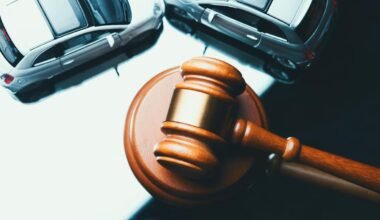Slip, trip, and fall incidents occur every single day in cities across America, but in a vibrant metropolis like Chicago, the stakes rise significantly. With over 2.6 million residents, Chicago stands as the third most populous city in the United States. The city thrives on a diverse economy driven by finance, manufacturing, healthcare, and an expansive legal sector.
Its dense population, numerous commercial buildings, and high foot traffic create a landscape where property-related injuries usually give rise to legal battles. For anyone injured on someone else’s property, consulting with a Chicago premises liability attorney is usually the first step toward seeking justice.
This article breaks down the main principles behind premises liability, including its definition, who is responsible, and why every Chicago resident needs to stay informed about this critical topic.
What Is Premises Liability?
Premises liability is known as the legal responsibility that property owners have when someone suffers an injury due to unsafe conditions on their land or in their buildings. This concept applies to homes, businesses, parking lots, public buildings, and all other types of physical properties. The moment someone steps onto a property, invited or allowed, the law expects the property owner to ensure reasonably safe conditions exist.
Who Holds Responsibility?
Property owners bear the legal burden for maintaining safety. In some situations, tenants or property managers share this responsibility, depending on the terms of the lease agreements or their control over specific areas. Liability arises when someone gets injured due to hazards that the responsible party failed to fix, warn about, or inspect properly. Slippery floors, loose handrails, broken steps, poor lighting, and unmarked construction zones are all common risk factors.
What Must an Injured Person Prove?
To hold someone accountable, the injured party must prove three elements:
- A hazardous condition existed on the property.
- The person responsible for the property was aware of or should have been aware of the danger.
- That failure led directly to the injury.
For example, if a grocery store employee cleans the floor and forgets to place a warning sign, and a shopper slips, the law considers the injury to be preventable. The store had the chance to act and failed.
What Are the Legal Categories of Visitors?
Premises liability law separates visitors into three main groups: invitees, licensees, and trespassers.
- Invitees include customers, clients, and members of the public entering a property for business or public purposes.
- Licensees enter a property with permission for personal reasons, like guests visiting a friend. Owners must fix known dangers or at least warn about them.
- Trespassers enter without permission. Property owners owe them the lowest duty, but still cannot set traps or act with the intent to harm.
Even children who trespass may receive special protection under laws like the “attractive nuisance doctrine,” which holds owners accountable for dangerous features that lure kids, such as swimming pools or construction equipment.
What Types of Injuries Are Under Premises Liability?
Common injuries entail broken bones, head trauma, spinal injuries, lacerations, and severe bruising. These injuries result from falls, falling objects, electrocution, or contact with hazardous substances. Medical bills, lost wages, and long-term suffering usually follow, making these cases both serious and life-altering.
Conclusion
Premises liability law provides a framework for the rights and responsibilities surrounding injuries that occur on property. It demands accountability from those responsible for a location’s safety and protects those harmed through no fault of their own.



